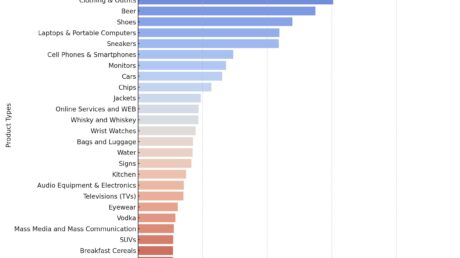Product Placement is an all-encompassing term. When a brand compensates a piece of content with dollars, that’s product placement. When a production utilizes a production resources person to source brands and products for its art department team, that’s product placement.
Despite the relationship between brands and content being commonly known as product placement, the past few decades have seen the rise of terms, such as integration, in-kind/trade-out, and “promo materials.” While these all may seem like they are different concepts, they are, in fact, branches to the overall tree of product placement and its core motivation to showcase brands on-screen to provide world and character authenticity.
What do these terms really mean, then?
Integration – A product integration is a brand placement that is supported with dollars, also known as a “fee deal.” These are placements that are typically crafted by collaborating with the production to either lock in a scripted moment or craft a moment all together. Integrations come with more direction as to how the product should be featured on screen from both the brand and the studio or production company. Integration deals incorporate guarantees known as deliverables to ensure the product is featured appropriately and to the brand’s liking so that the production company or studio can be paid for integrating the brand. Ultimately, the idea of integration is the same as product placement, which is to feature a brand within content, but utilizing the term “product integration” is a way to distinguish a paid from a non-paid placement.
In-Kind/Trade-Out– These two terms, as well as barter, can also be synonymous with “traditional product placement” as they deal with working with productions to fulfill product needs they have by breaking down the script. The benefit of in-kind product is that it offsets the cost of either creating an item, renting it from a brand or an establishment that houses the desired product, or simply purchasing the item. Similarly, trade-out and barter are agreements made between the production and the brand to attempt to utilize the product in the production without the guarantee that it will be in the final cut. These agreements typically do not contain deliverables because the brand is not paying money to incentivize the production to feature said product. The other added benefit is that these agreements then clear the product for usage on screen as the brand or agency provides the cleared product that is intended for on-screen use. Product placement is the concept of advertising within content, so in-kind, trade-out, and bartering are all derivates of “traditional product placement” and its objective to achieve a feature moment for a brand within a production.
“Promotional Material” – Alternatively known by the shorthand “promo”, promotional material is a term coined to bridge the gap by productions between product placement and product needs. It’s similar to the idea of in-kind products, in that it usually involves brands sending products freely to try and be placed in content. However, it is a way for production teams to distinguish which of their items are cleared by a brand for usage or are items they have purchased or crafted. In the past few decades, some productions have moved away from the idea of “free promo” because studios may have regulations for their productions accepting free product and using it without clearance. Therefore, in-kind, trade-out, and barter agreements are the favorable route to cover all included parties’ legal bases. The brand and production community have strayed from saying promotional material in favor of product placement because “promo” carries a sense of free product usage that neither production companies nor brands prioritize. The current landscape demands strategy and guidelines that should be respected by all parties involved in creating product placement.
Both the production community and the brand community have crafted numerous terms to differentiate and specify what it means for a brand to be featured in content. Product integrations are strategic deals with a dollar incentive to craft an opportunity for a brand that’s either scripted or not. The decades-long relationship between brands and the production community is showcased with the idea of in-kind product, or trade-out and barter, where brands work with production teams to offset their costs. As for “promotional materials”, brands have moved away from simply sending product in favor of being involved with the process of product placement. As brands and production move forward together, new terms may develop, but it’s important to remember that it’s all for the sole purpose to place products in content aka product placement.
Nick Hanson is a Production Manager at BENlabs.




